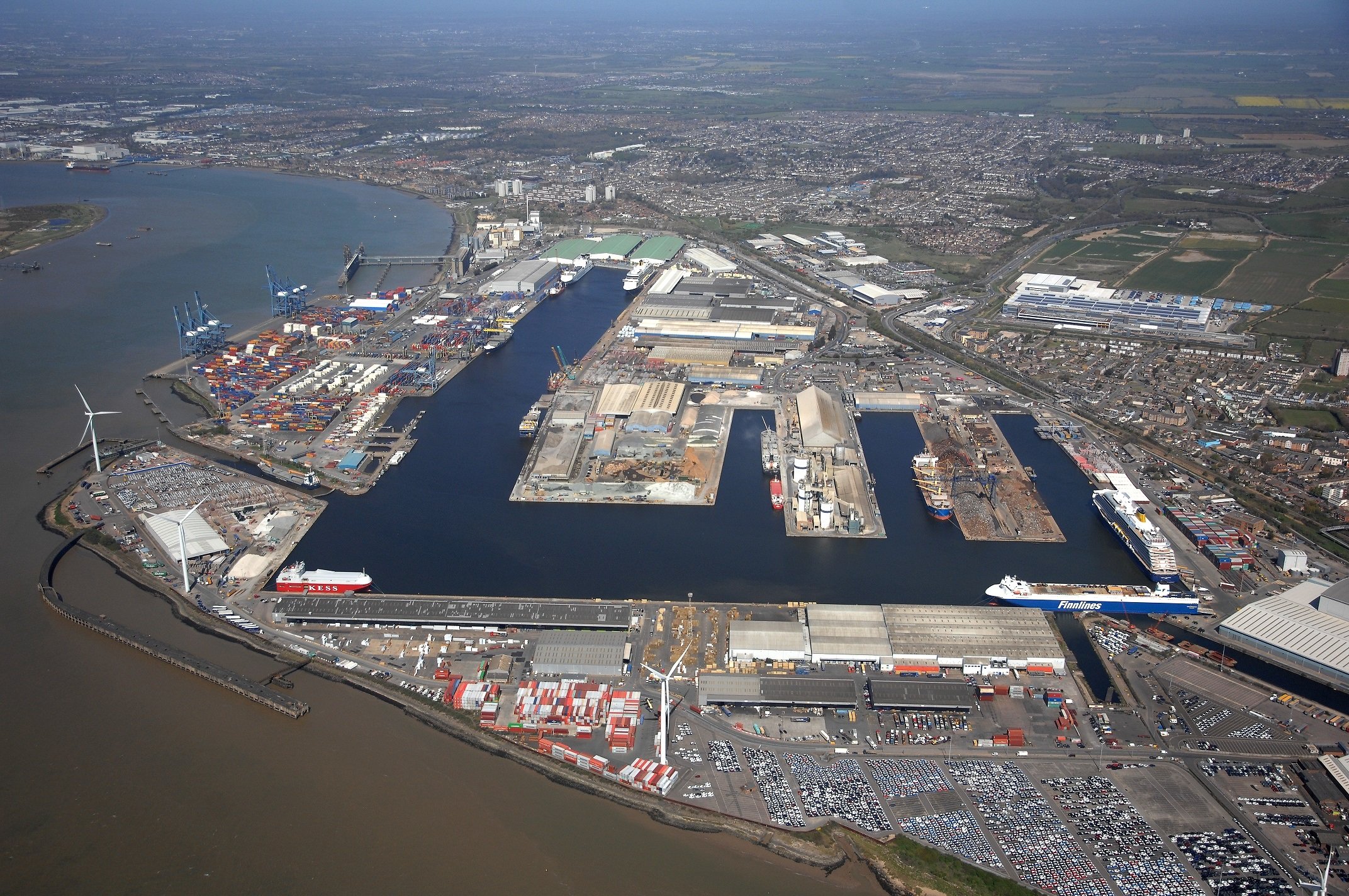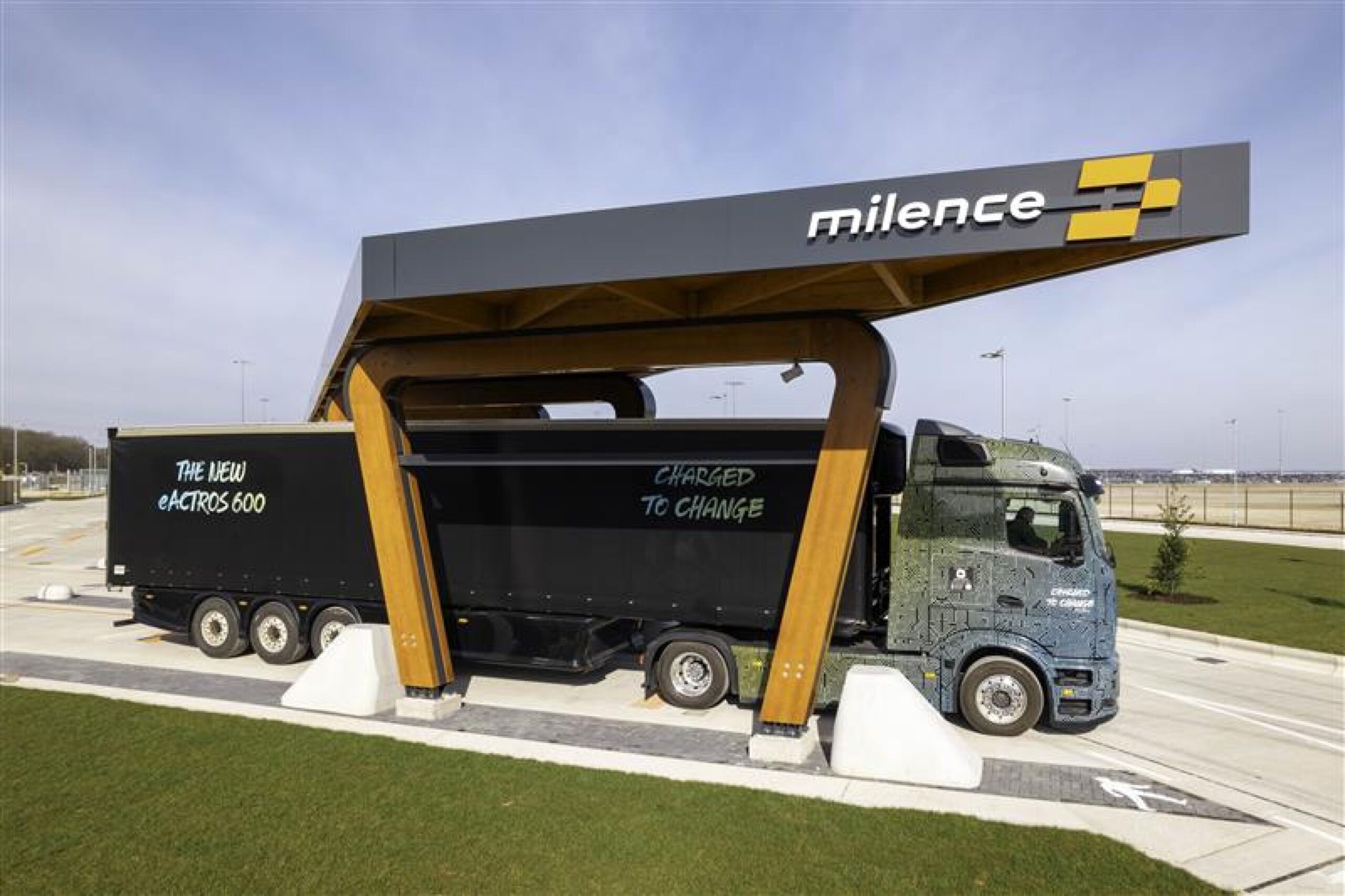
With a spate of major private investment in charging facilities for electric commercial vehicles, plus government’s new £30 million Depot Charging Scheme for trucks, vans and coaches, the logistics ecosystem is gaining the ground it needs to power zero emission fleets.
Growth in electric HGV charging infrastructure this year includes, for examples, Milence’s opening phase one of its first UK charging hub in Immingham with eight charging bays, while Nissan has just opened a £1.4m charging station at its Sunderland plant to support a fleet of 25 trucks. The busy Port of Tilbury, meanwhile, will have 16 rapid chargers ready for simultaneous use by the end of the year.
To help the infrastructure grow, government is contributing £200m to such installations through the Zero Emission HGV and Infrastructure Development (ZEHID) programme. It will enable the introduction of 54 new infrastructure hubs in accessible locations and along the strategic road network.

Earlier this month, government also announced a further £30m of grants available in its Depot Charging Scheme (DCS) to help more operators install their own chargers for their light commercial vehicle, HGV and coach fleets. Scottish government is also making funding available, via a £2m HGV Market Readiness Fund, to help operators across the country prepare for the transition.
Cenex, in partnership with the Energy Saving Trust, has been selected to assist in delivery of the DCS and the cash injection is projected to support 3,000 new van and 200 HGV chargepoints. DfT will cover up to 75% of eligible capital costs, with a maximum limit of £1m per organisation.
Chris Rimmer, Cenex’s Head of Department, Policy, Strategy and Implementation, Cenex said: “Facilitating the deployment of quality infrastructure into depots will be a crucial step in accelerating the electrification of vans, coaches and HGVs, which are the next big challenge for transport decarbonisation.”
The grant will remain available until the allocated funding has been exhausted or until 28 November – whichever comes first. Eligible costs include purchasing charge points of any type or speed, as well as labour and material expenses needed for installing and energising the charge points.
To be eligible, applicants must fit certain criteria. They must be a registered fleet operator with depots in the UK for at least one year, own lease or order at least one battery electric van or HGV as part of their fleet, and have guaranteed sufficient grid capacity at their site by 31 March next year – the date that infrastructure installations must be completed.

James Venables, Head of Future Sustainability at Daimler Truck UK, said the next phase of the scheme – how the funding is delivered – will be key. “For [charging] points to be truly effective they must offer high enough power ratings and be sited in the right places,” he said.
“Key to making battery powered trucks a practical option for UK transport is the potential to build charging top-up time into daily work patterns – with vehicles being plugged in while they’re already stationary, rather than making extra stops to charge.
“In an ideal world, operators would be able to combine charging at their own depots, at delivery sites and at strategic points on the road network.”
Infrastructure funding has long been called for by industry given current ambitions for all newly registered trucks weighing up to 26 tonnes to be zero emission by 2035, and the remainder of the market by 2040 – though the scale of that ambition will require consistent and even wider action.

Indeed, companies currently face wait times of up 15 years for grid connections – beyond 2040 – according to the Department for Energy Security and Net Zero, posing a major barrier to installing the depot chargepoints that may be funded.
With the recent announcement of government fast-tracking of grid connections for data centres, wind farms and solar power installations, this preferential treatment – as well as consistent and efficient implementation of local planning policy – should also be afforded transport depots.
Mike Hawes, SMMT Chief Executive, said, “We cannot deliver net zero and improve air quality without decarbonising commercial vehicles. But if operators have to wait up to 15 years just to be able to plug them into their depots, there is no case for investment.
“Prioritising grid connections, alongside reform to planning and action on energy costs, would reduce barriers to adoption, ensuring commercial vehicles continue to carry the loads that keep our economy on the move whilst doing the heavy lifting the nation needs to reach net zero.”


